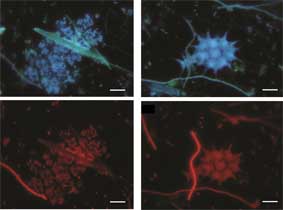
Scientifics from the University of Valencia have participated in the first full description of the microbial metagenome of Albufera lake and Murcia Mar Menor. The team of experts has worked with the prestigious American Craig Venter Institute and the University Miguel Hernández from Alicante, among other centers, to sequence the genomes of different groups of microorganisms of these two representative lagoons of the Mediterranean, a fresh water one, the Albufera and a saltwater one, such as the Mar Menor. In addition the research has pioneered internationally the application os this modern technique, which involves massive sequencing in continental shelfs ecosystems.
After obtaining more than one and half million sequences, the researchers affirm in their conclusions, published in the journal Nature Scientific Reports that the Albufera” presents much more microdiversity than was previously thought due to is an ecosystem stressed by pollution.” Thus, “we not only have advanced in the knowledge about this lake and the ecological characteristics of the microorganisms that live in, but no we know that it has a great potential to overcome pollution because microorganisms may represent natural tools for improving its ecological quality”, says the researcher, Antonio Camacho, from the Cavanilles Institute of Biodiversity and Evolutionary Biology of the Science Park of University of Valencia.
To date unknown bacteria
The sequencing conducted by the international team of scientists has revealed general patterns of Mediterranean lagoons, while showing that the Albufera and Mar Menor have a completely different microbial composition, as they offer to different ecological niches. About the Mar Menor , for example, despite being more saline than the Mediterranean, its microbiota is partly similar to this sea, although it has very different characteristics such as the absence of Prochlorocuccus, a cyanobacterium common in the sea. “Also has been surprising to detect at Mar Menor how a bacteria completely unknown around the world is dominant in this ecosystem. This bacterium is alpha-Proteobacteria, oxidising of sulfur, stresses Camacho”.
Regarding the Albufera, although a eutrophicated ecosystem, with high levels of pollution, metagenomic analysis has revealed a great diversity of microbial organisms, even among phytoplankton and cyanobacteria, which has discovered a huge specific diversification. “What seems through the microscope a single species, thank you to a much more sensitive technique shows the existence of dozens of species”, as the scientist from the University of Valencia explained.
Besides the basic knowledge obtained about the composition of the microbial community in the Albufera and Mar Menor, as well as about the ecological characteristics of the microorganisms that inhabit there, the results of the study “questions some preconceived ideas about the theoretical of low diversity in stressed ecosystems or even allow to link established theories of the macroscopic world and its extrapolation to the microbial world”, explains Antonio Camacho. The Knowledge of the composition of the microbial world at these ecosystems can be useful to facilitate its ecological recovery, “but also has an undoubted potential biotechnology,” adds the scientist.
Més informació:
www.uv.es/cdciencia
Last update: 13 de november de 2012 10:56.
News release


















